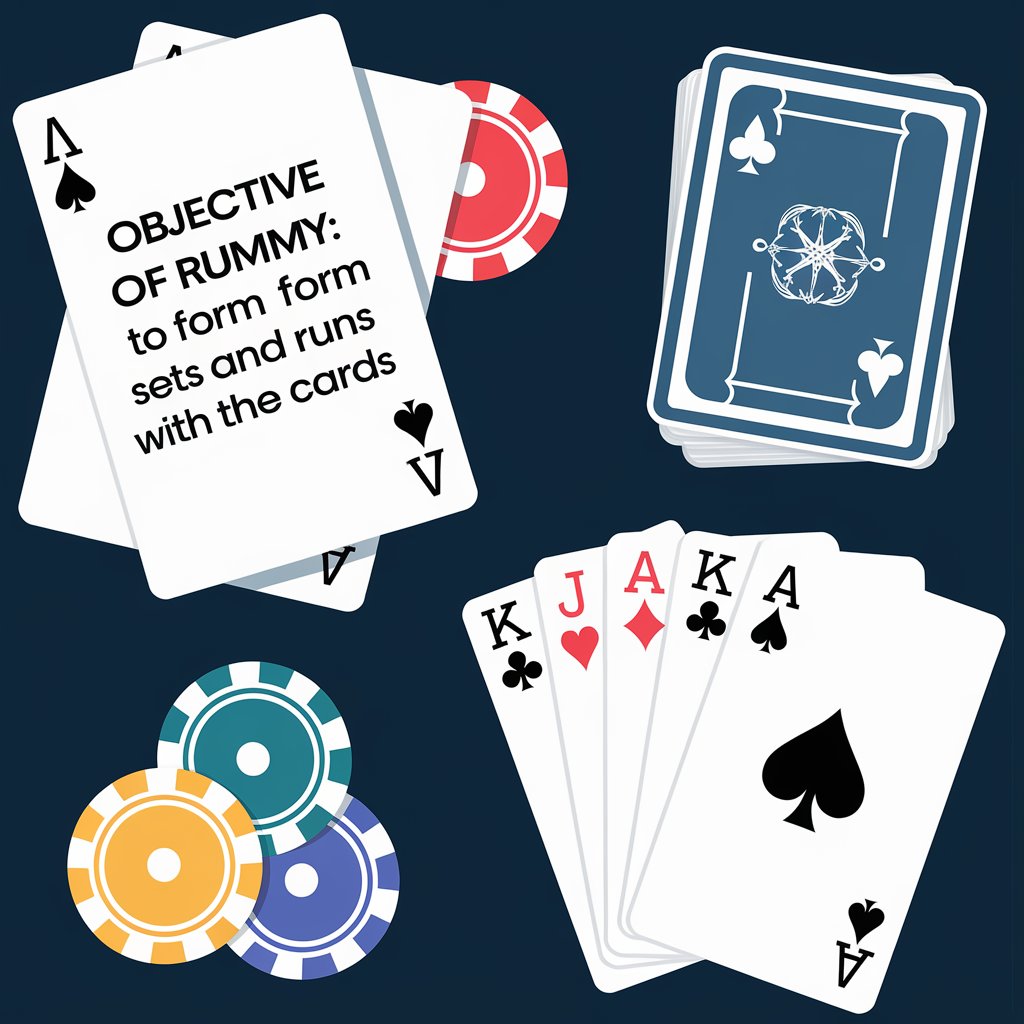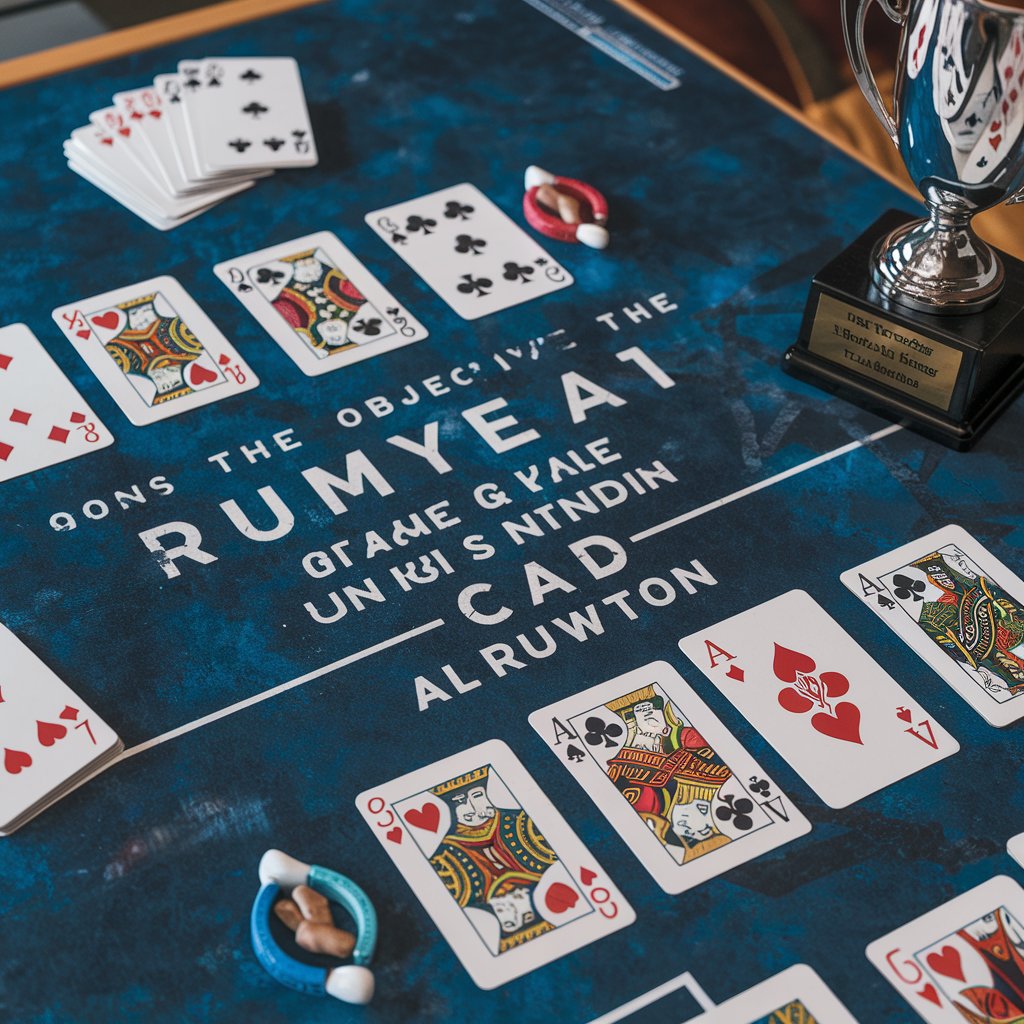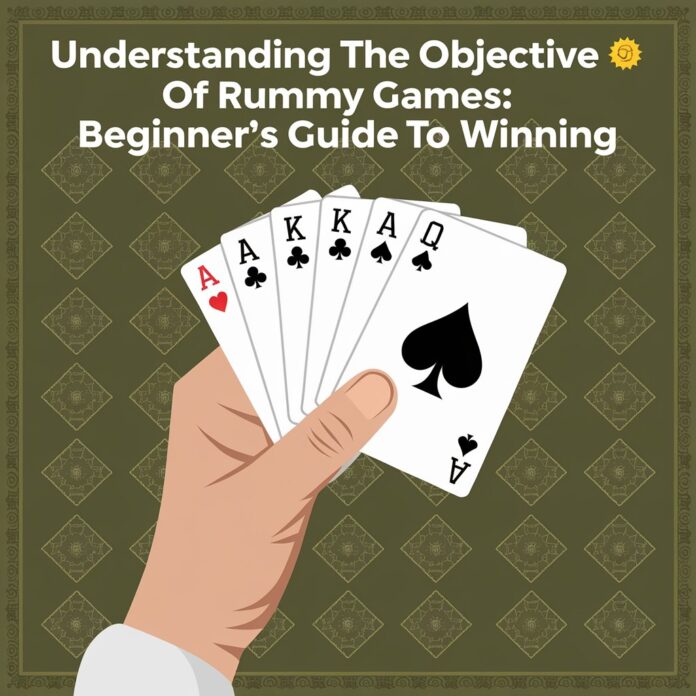Rummy is one of those card games that hooks you the moment you grasp its rhythm. Whether you’re huddled around a table with friends or tapping away at an online version, there’s something irresistible about the shuffle of cards and the thrill of outsmarting your opponents. But if you’re new to rummy, you might be wondering: What’s the point of this game? What’s the objective that drives every draw, meld, and discard? Don’t worry—this blog is here to break it all down for you.
In this guide, we’ll dive deep into the objective of rummy games, explore how it shapes gameplay, and offer tips to help beginners succeed. From the basic goal to variations across popular rummy styles, you’ll leave with a clear understanding of what you’re aiming for—and how to get there. Let’s shuffle up and deal into the world of rummy!
What Is Rummy, Anyway?

Before we unpack the objective, let’s set the stage. Rummy is a family of card games played with a standard 52-card deck (sometimes two decks, depending on the number of players). It’s been a favorite for generations, evolving into versions like Gin Rummy, Indian Rummy, and Rummy 500. At its core, rummy is about arranging cards into specific combinations—sets and runs—while outpacing your opponents.
The beauty of rummy lies in its blend of luck and skill. You can’t control the cards you’re dealt, but you can master how you play them. And that’s where the objective comes in—it’s the guiding star that turns a random handful of cards into a winning strategy.
Keywords: rummy objective, what is rummy, rummy card game
The Core Objective of Rummy Games
So, what’s the main goal of rummy? Simply put, the objective is to be the first player to form all your cards into valid melds and discard your last card—a move known as “going out.” Let’s break that down:
- Melds: These are the combinations you create with your cards. There are two types:
- Sets: Three or four cards of the same rank (e.g., 6 of hearts, 6 of spades, 6 of clubs).
- Runs: Three or more consecutive cards of the same suit (e.g., 4, 5, 6 of diamonds).
- Going Out: Once all your cards are melded (either laid down on the table or, in some versions, still in your hand), you discard your final card to end the round.
When you “go out,” the round ends, and your opponents tally up the points of the cards they’re still holding. The fewer points they have melded, the more they score against themselves. In multi-round games, the ultimate objective might shift to having the lowest total score over several rounds—but more on that later.
This objective sounds straightforward, right? Arrange your cards, ditch the last one, win. But as you’ll see, the journey to “going out” is where rummy gets juicy.
How the Objective Shapes Gameplay

Understanding the objective of rummy isn’t just about knowing the endgame—it’s about seeing how it influences every move you make. Here’s how it plays out in a typical round:
The Setup
- Players (2-6) are dealt a hand of cards—usually 7, 10, or 13, depending on the variation.
- The leftover cards form a draw pile, and one card kicks off the discard pile.
Your Turn
Each turn follows a three-step dance:
- Draw: Pick a card from the draw pile (a mystery!) or the discard pile (visible to all).
- Meld (Optional): Lay down sets or runs if you’re ready—or hold off for a bigger play.
- Discard: Toss one card to the discard pile, keeping your hand lean.
Every draw and discard is a step toward the objective: whittling your hand down to nothing but melds. You’re racing against your opponents, who are doing the same thing—and watching your every move.
The Finish Line
The moment you meld all your cards and discard that final one, you’ve hit the objective. You’re out, and the round is over. Your opponents are left scrambling, counting up their unmelded cards as penalty points.
Keywords: rummy gameplay, rummy rules, how to win rummy
Scoring and the Bigger Picture
In a single-round game, “going out” is the whole objective—first one out wins, end of story. But rummy often stretches across multiple rounds, adding a layer to the goal. Here’s how scoring ties into the objective:
- Card Values:
- Number cards (2-10): Face value (e.g., 7 = 7 points).
- Face cards (Jack, Queen, King): 10 points each.
- Aces: 1 point (or 11 in some variations).
- Jokers (if used): 0 points, acting as wild cards.
- Penalty Points: When someone goes out, remaining players total the value of cards they haven’t melded.
- Winning the Game: In multi-round rummy, you play until someone reaches a set point total (like 100 or 200). The player with the lowest score wins.
So, while the immediate objective is to go out each round, the long-term goal might be minimizing your points over time. It’s a balancing act—do you rush to go out, or play conservatively to keep your score low? That’s the strategic spice of rummy.
Variations and Their Objectives

Rummy’s objective can shift slightly depending on the version you’re playing. Let’s explore how the goal adapts in popular styles:
Gin Rummy
- Players: 2
- Cards: 10 each
- Objective: Form all your cards into melds and “knock” (end the round) when your unmelded cards (deadwood) total 10 points or less. Bonus points if you “go gin” by melding everything with no deadwood.
- Twist: You don’t have to go out immediately—knocking early can catch your opponent off guard.
Indian Rummy
- Players: 2-6
- Cards: 13 each, using 2 decks with jokers
- Objective: Form at least two runs (one “pure” run without jokers) and meld the rest into sets or runs, then go out. It’s stricter but rewards careful planning.
Rummy 500
- Players: 2-8
- Cards: 7 each (or more with fewer players)
- Objective: Score 500 points first by melding cards and laying off extras onto others’ melds. Going out isn’t the end—points matter more.
Each variation tweaks the objective, but the heart of rummy—building melds and shedding cards—stays constant. Pick a style that suits your vibe and start playing!
Keywords: rummy variations, Gin Rummy objective, Indian Rummy rules
Why Understanding the Objective Matters
If you’re new to rummy, grasping the objective isn’t just about following rules—it’s about unlocking the game’s fun. Here’s why it’s a game-changer:
- Guides Your Strategy: Knowing you need melds helps you decide which cards to keep or discard.
- Keeps You Competitive: Spotting when an opponent’s close to going out lets you adjust your pace.
- Makes It Fun: There’s nothing like the rush of laying down that final discard and declaring victory.
Without the objective, rummy’s just a pile of cards. With it, it’s a battle of wits and timing.
Tips to Achieve the Rummy Objective
Ready to nail that “going out” moment? Here are some beginner-friendly tips to reach the objective faster:
- Focus on Melds Early: Start building sets or runs as soon as possible—don’t hoard cards too long.
- Track the Discard Pile: It’s a goldmine of clues about what your opponents need (and what you can safely ditch).
- Use Wild Cards Smartly: Jokers or wilds can complete a meld in a pinch—save them for clutch moments.
- Discard High Cards First: Face cards rack up points if you’re caught holding them.
- Stay Flexible: Be ready to switch from a set to a run if the cards shift.
Practice these, and you’ll be “going out” before you know it!
Keywords: rummy tips, rummy strategy, win at rummy
Common Pitfalls That Block the Objective
New players often stumble on their way to the rummy objective. Avoid these traps:
- Holding Too Many Cards: Waiting for the “perfect” meld can backfire—keep your hand manageable.
- Ignoring Opponents: If they’re picking up discards like crazy, they’re close to going out.
- Misjudging Discards: Tossing a card someone needs can hand them the win.
- Forgetting the Rules: Keep the meld requirements (sets, runs) clear in your head.
Stay sharp, and you’ll dodge these rookie mistakes.
The Joy of Chasing the Rummy Objective
What makes rummy’s objective so satisfying? It’s the mix of tension and triumph. Every turn is a mini-puzzle—should you draw from the pile or risk the discard? Can you meld now, or wait for one more card? And when you finally go out, leaving your opponents with a fistful of points, it’s a victory worth savoring.
Plus, rummy’s objective is universal. Whether you’re playing with grandma or battling strangers online, the goal unites everyone in a shared challenge. It’s easy to learn, tough to master, and endlessly replayable.
How to Start Chasing the Rummy Objective Today
Ready to put this knowledge into action? Here’s how to get started:
- Grab a Deck: One 52-card deck works for 2-4 players; add a second for bigger groups.
- Learn the Basics: Review this guide and deal a practice hand.
- Play a Round: Focus on forming melds and going out—don’t sweat the score yet.
- Go Online: Try free rummy apps to practice solo or with others.
Search “play rummy online free” for platforms to test your skills. The objective’s the same everywhere—meld, discard, win!
Keywords: play rummy online, rummy for beginners, start playing rummy
Final Thoughts on the Rummy Objective
Understanding the objective of rummy games is your ticket to enjoying this timeless classic. It’s all about forming those melds, shedding your cards, and beating your opponents to the finish line. Whether you’re aiming to go out in a single round or keep your score low over a marathon session, the goal gives every move purpose.
So, shuffle that deck, deal those cards, and chase the rummy objective with confidence. Got a question or a rummy win to brag about? Drop it below—I’d love to hear how you fare!

Zareb Saleh is a journalist at Gulf Today and a ghostwriter for Gameoholic, specializing in gaming, technology, and digital culture. With a keen eye for industry trends, he delivers insightful stories that engage and inform readers.




